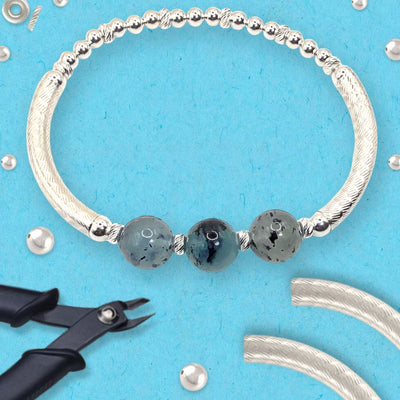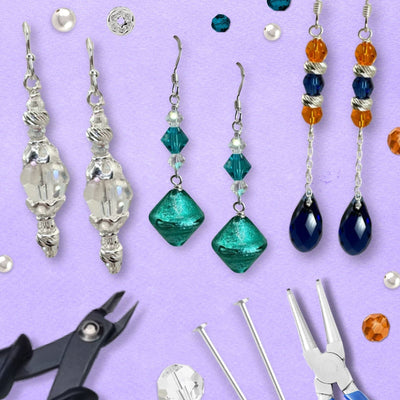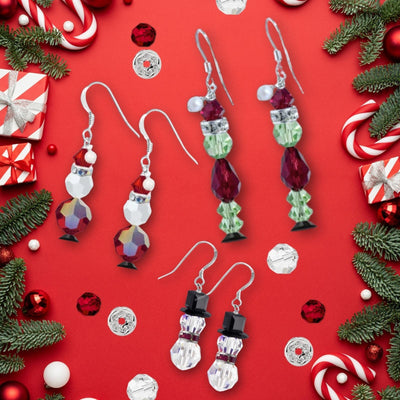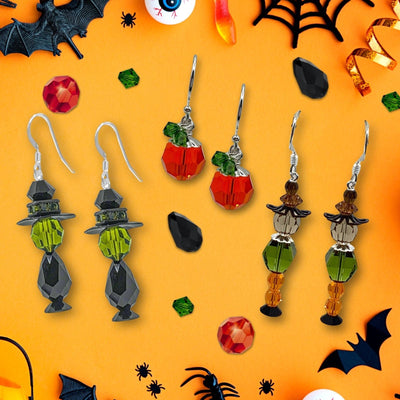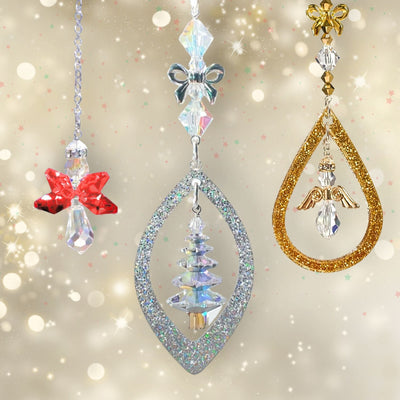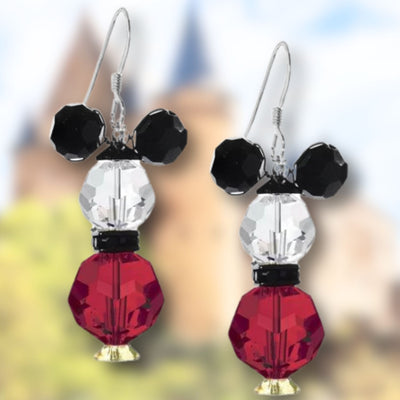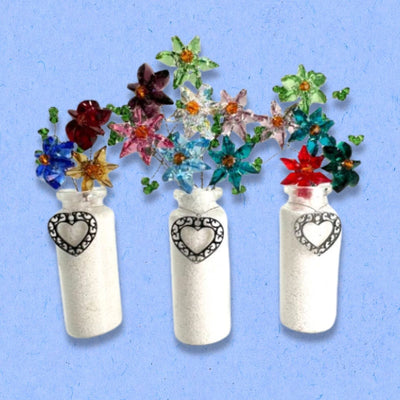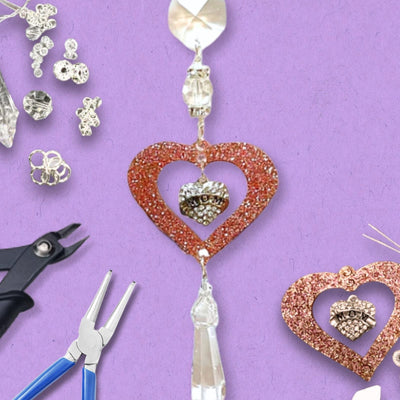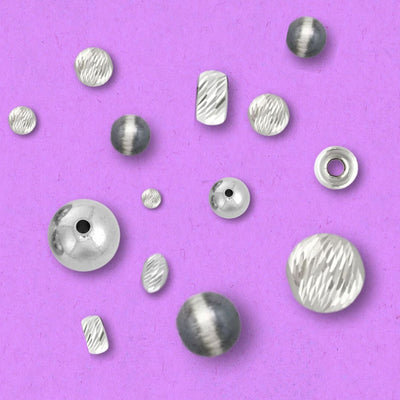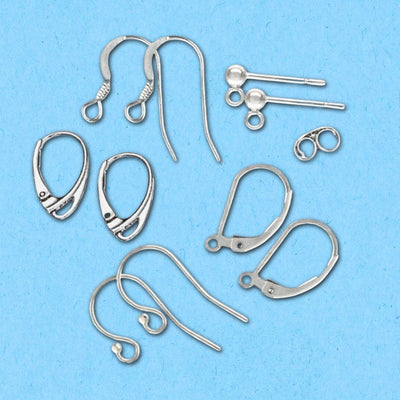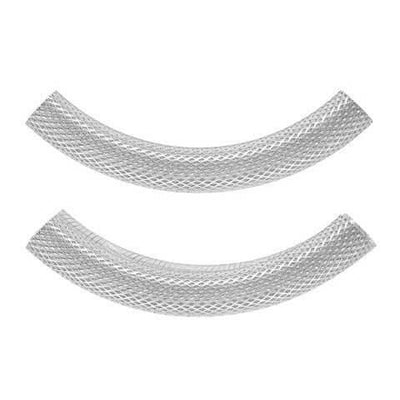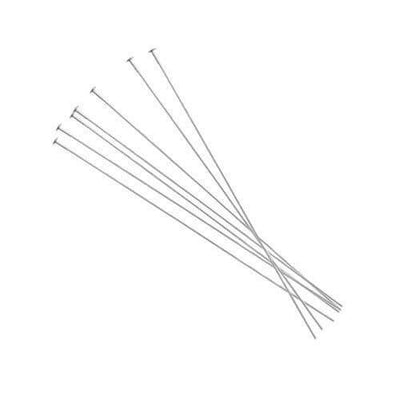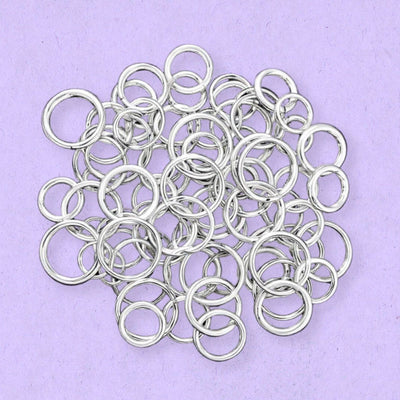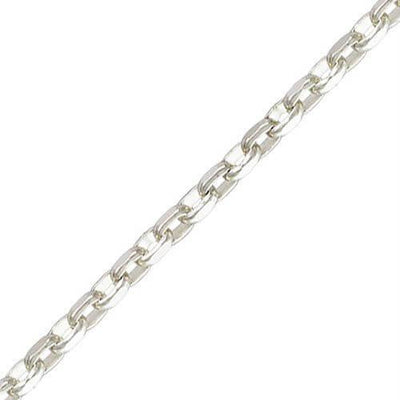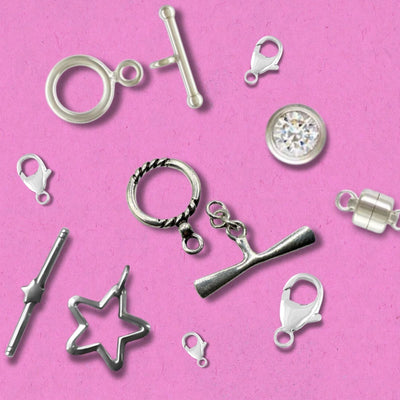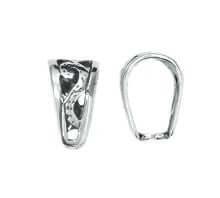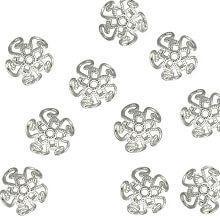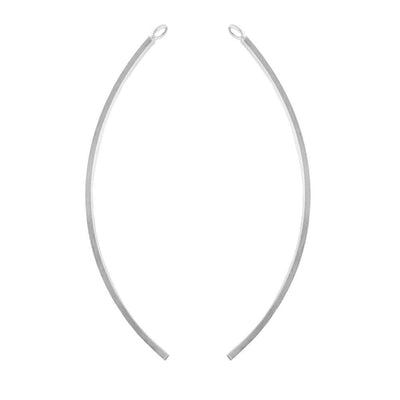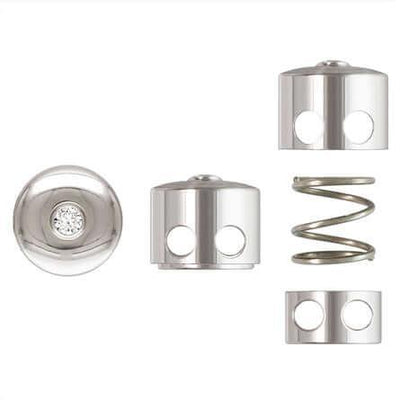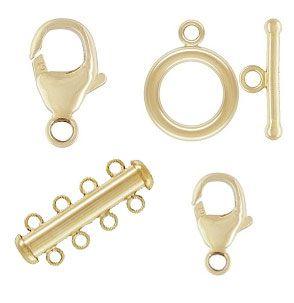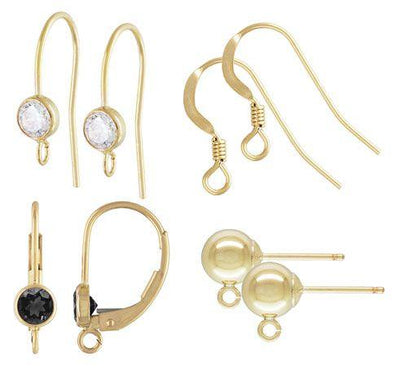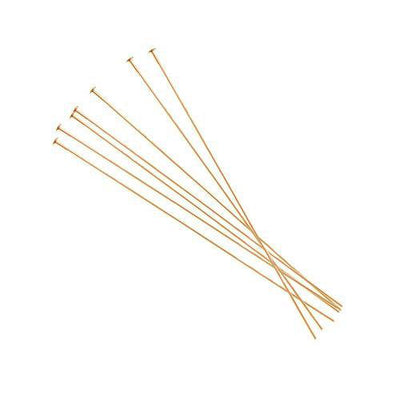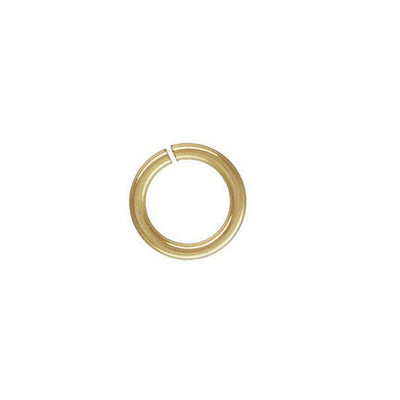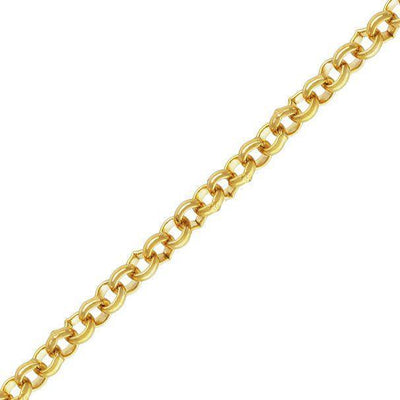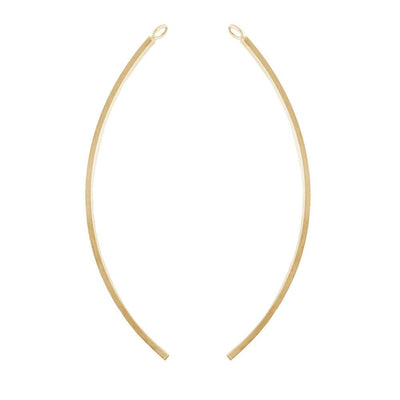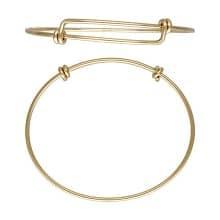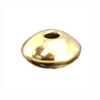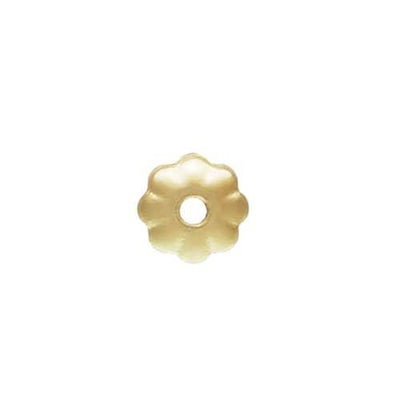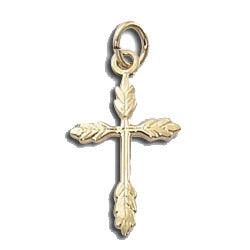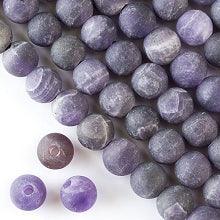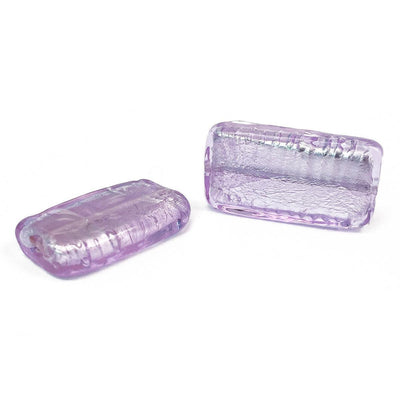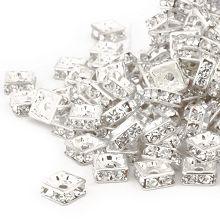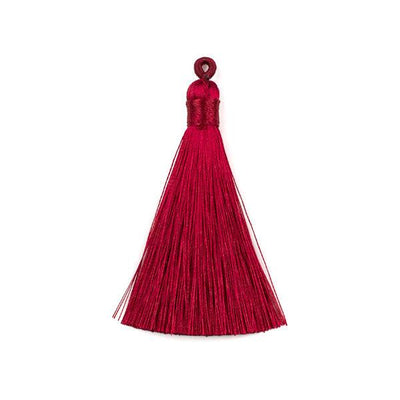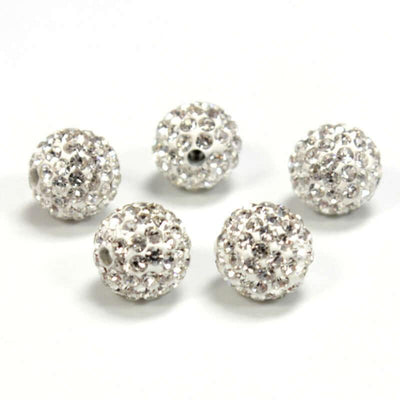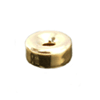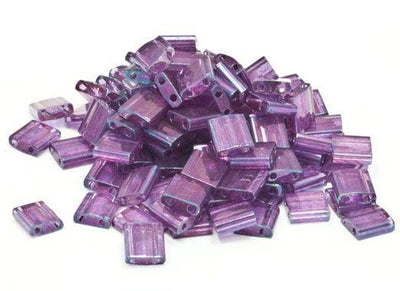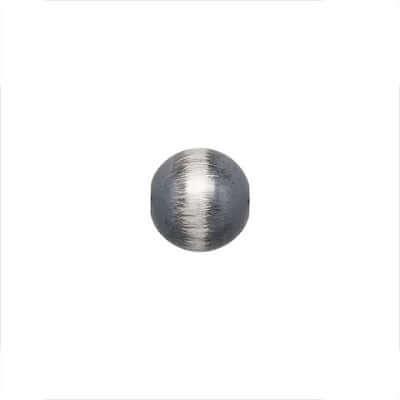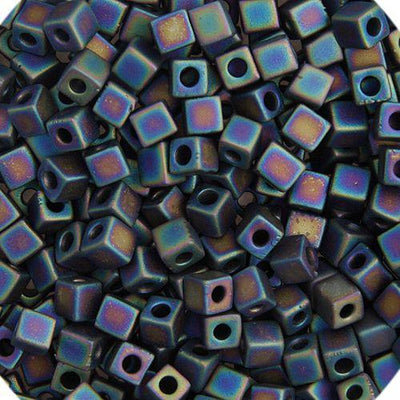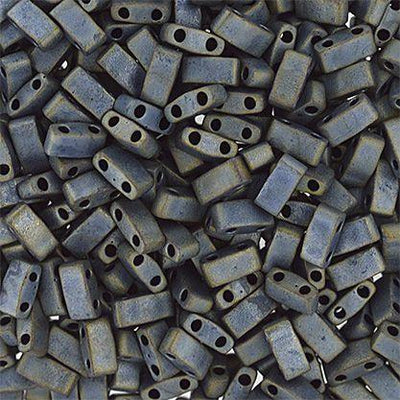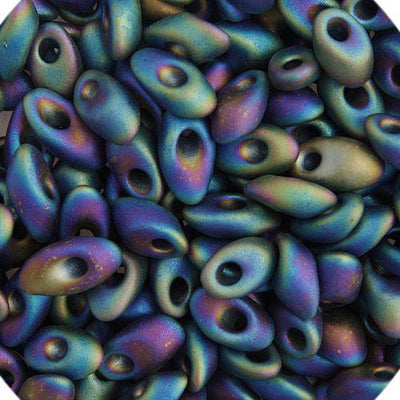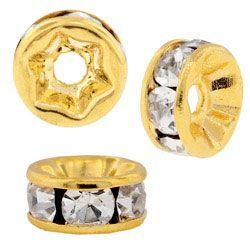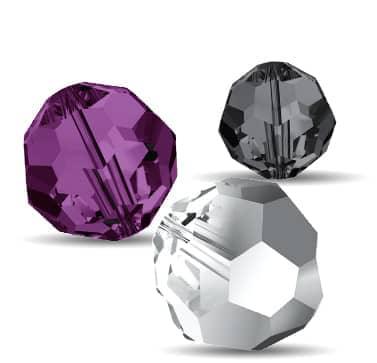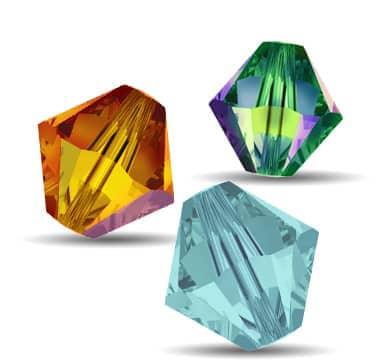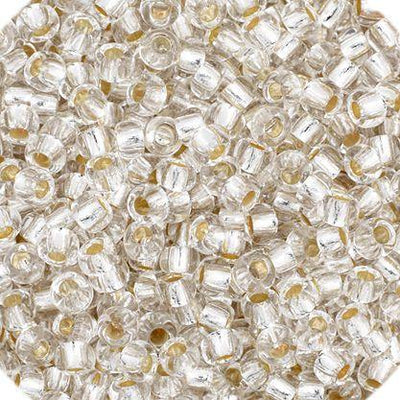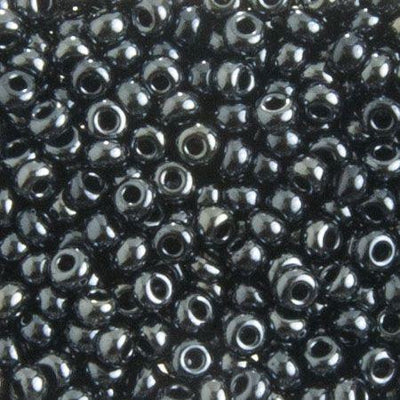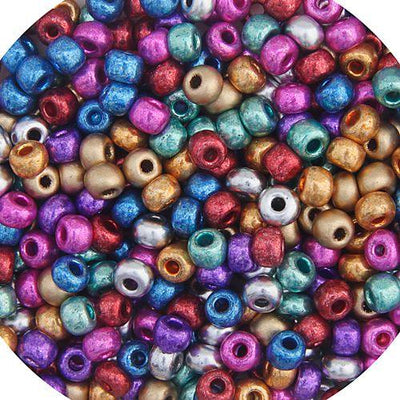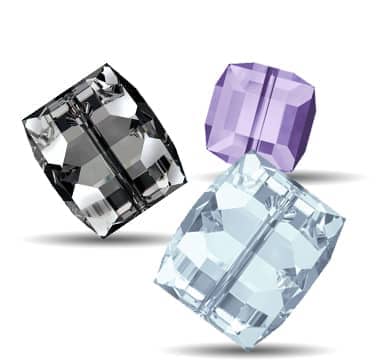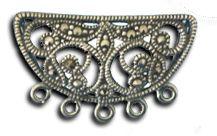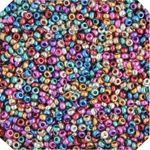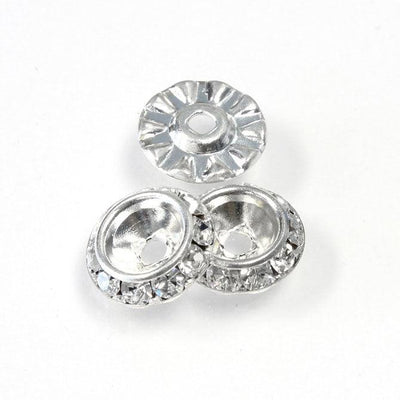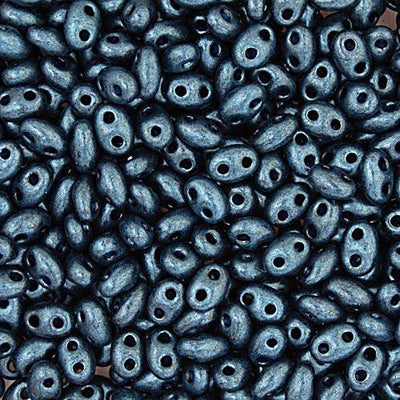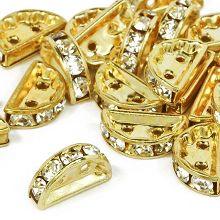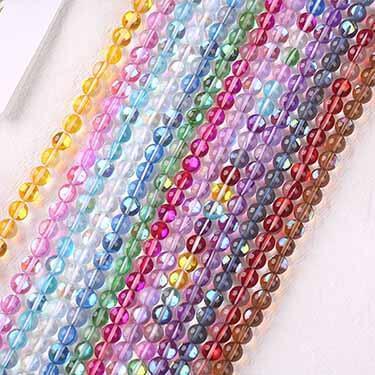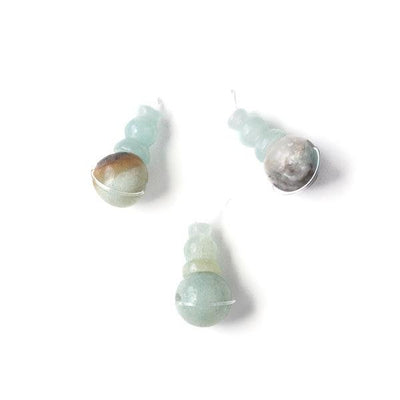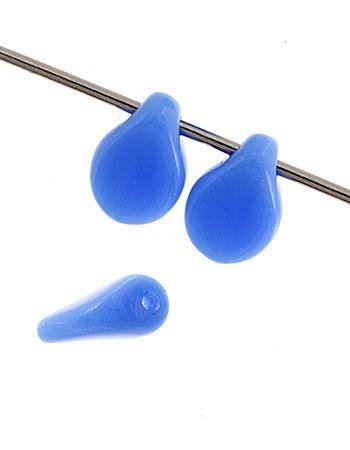Jewelry Making Sizing Guide: Beading Wire, Chain, Jump Rings, Head Pins & Eye Pins – Too Cute Beads
Beading Wire (Flexible Beading Wire for Stringing)
Beading wire, such as Beadalon or SoftFlex, consists of multiple strands of stainless steel wire coated in nylon, used for stringing beads. The diameter and strand count affect flexibility, strength, and suitability for different beads.
Chain is sold in bulk by the spool, meter, or foot, and its link size and thickness determine its use in jewelry making. Common styles include cable, curb, rolo, and figaro chains.
Jump rings connect components in jewelry making, and their size, gauge, and aspect ratio (AR) determine their suitability for different projects. Sizes are typically measured by outer diameter (OD) unless specified as inner diameter (ID).
The length of head pins and eye pins determines how much space you have for beads and wrapping, as well as the overall drop of your design.
The gauge affects the pin’s strength, flexibility, and compatibility with bead hole sizes. Lower numbers indicate thicker wire.
The size of the head (on head pins) or eye (on eye pins) impacts both functionality and aesthetics.
The gauge of the pin or beading wire must match the bead hole size to ensure a secure fit without wobbling or damaging the bead.
When forming loops (simple or wire-wrapped) on head pins or eye pins, extra length is needed beyond the bead stack.
Beading wire, such as Beadalon or SoftFlex, consists of multiple strands of stainless steel wire coated in nylon, used for stringing beads. The diameter and strand count affect flexibility, strength, and suitability for different beads.
-
Diameter (Thickness):
- 0.010 inches (0.25mm): Very fine, ideal for lightweight beads like seed beads or small pearls; best for delicate necklaces with a floating effect; often 7-strand for minimal flexibility [Web ID: 13] [Web ID: 16].
- 0.012–0.014 inches (0.30–0.36mm): A versatile size for most projects, suitable for small to medium beads (e.g., 4–6mm glass beads, crystals); typically 19-strand for better drape [Web ID: 16] [Web ID: 17].
- 0.018–0.020 inches (0.46–0.51mm): Medium thickness, good for heavier beads (e.g., 6–8mm stone beads); often 49-strand for maximum flexibility and strength, ideal for bracelets or multi-strand designs [Web ID: 13] [Web ID: 17].
- 0.024 inches (0.61mm): Thick and sturdy, best for large, heavy beads (e.g., 10mm+ gemstones or lampwork beads); typically 49-strand to prevent kinking; used in statement necklaces [Web ID: 13].
-
Strand Count:
- 7-strand: Stiffer, more prone to kinking, best for lightweight designs where structure is needed [Web ID: 13].
- 19-strand: More flexible, good for general-purpose stringing with small to medium beads [Web ID: 16].
- 49-strand: Very supple, ideal for heavy beads or designs requiring a soft drape, like multi-strand necklaces [Web ID: 17].
-
Bead Hole Compatibility:
- Small holes (0.5–0.8mm): Use 0.010–0.012 inches wire (e.g., for pearls, seed beads) [Web ID: 16].
- Medium holes (0.8–1.2mm): Use 0.014–0.018 inches wire (e.g., for 4–6mm beads) [Web ID: 17].
- Large holes (1.2mm+): Use 0.020–0.024 inches wire (e.g., for 8mm+ beads) [Web ID: 13].
Chain is sold in bulk by the spool, meter, or foot, and its link size and thickness determine its use in jewelry making. Common styles include cable, curb, rolo, and figaro chains.
-
Link Size (Width/Diameter of Links):
- 1.5mm–2.5mm (e.g., Figaro chain): Very fine, ideal for delicate necklaces or lightweight charms; often used in minimalist designs [Web ID: 0] [Web ID: 16].
- 3mm–4mm (e.g., Cable chain): Suitable for small to medium pendants or charms; a popular choice for standard necklaces and bracelets [Web ID: 16] [Web ID: 17].
- 5mm–7mm (e.g., Rolo chain): Works well for chunkier pendants or multi-strand designs; often used in statement necklaces or charm bracelets [Web ID: 5] [Web ID: 16].
- 8mm–12mm (e.g., Curb chain): Best for heavy, bold pieces like men’s necklaces or large statement jewelry; provides a sturdy base for oversized charms [Web ID: 5].
-
Wire Thickness (Gauge of Chain Wire):
- 20 gauge (0.8mm): Lightweight, used in delicate chains for small pendants or earrings [Web ID: 0].
- 18 gauge (1.0mm): Medium strength, suitable for standard necklaces or bracelets with medium charms [Web ID: 0].
- 16 gauge (1.3mm): Sturdy, ideal for heavier chains used in chunky necklaces or bracelets [Web ID: 0].
-
Standard Lengths for Finished Pieces:
- Necklaces: 16–18 inches (choker), 20–24 inches (standard), 30–36 inches (long or opera length) [Web ID: 16].
- Bracelets: 7–8 inches (standard), 9 inches (anklet length) [Web ID: 16].
- Custom Lengths: Bulk chain allows cutting to any length; add 1–2 inches for clasps and jump rings [Web ID: 17].
Jump rings connect components in jewelry making, and their size, gauge, and aspect ratio (AR) determine their suitability for different projects. Sizes are typically measured by outer diameter (OD) unless specified as inner diameter (ID).
-
Outer Diameter (OD):
- 2mm–3mm: Very small, best for lightweight earrings or delicate connections (e.g., attaching tiny charms) [Web ID: 3] [Web ID: 5].
- 3.5mm–4.5mm: Suitable for lightweight earrings or connecting small components; often used with 20 gauge wire [Web ID: 3].
- 5mm–7mm: Most common size for attaching clasps to chains or linking charms to bracelets; ideal for standard necklaces and bracelets [Web ID: 3] [Web ID: 5].
- 8mm–12mm: Larger, used for chunkier jewelry, heavier charms, or multi-strand designs; great for statement pieces [Web ID: 5].
-
Gauge (Wire Thickness):
- 22 gauge (0.64mm): Thin and easy to open/close, but less durable; best for lightweight connections or delicate pieces [Web ID: 2].
- 20 gauge (0.8mm): Versatile for lightweight earrings, delicate chains, or small charms; a good balance of strength and ease of use [Web ID: 0] [Web ID: 3].
- 18 gauge (1.0mm): Stronger, ideal for medium-sized components like pendants or clasps on necklaces and bracelets [Web ID: 0] [Web ID: 3].
- 16 gauge (1.3mm): Sturdy, used for heavier charms, chunky bracelets, or chainmaille designs [Web ID: 0].
- 14 gauge (1.6mm): Very strong, reserved for substantial pieces like chunky necklaces or heavy-duty connections [Web ID: 0].
-
Aspect Ratio (AR): The ratio of the inner diameter (ID) to the wire diameter, crucial for chainmaille or ensuring flexibility in chains.
- AR 3.0: Allows two jump rings to pass through (e.g., ID of 3mm with 1mm wire); ideal for simple chains like a belcher chain [Web ID: 7].
- AR 3.2–4.2: Common for most chainmaille patterns; provides flexibility without being too loose [Web ID: 10].
- AR 4.7+: Looser weave, used for intricate chainmaille designs where more rings need to pass through [Web ID: 10].
- Inner Diameter (ID): Subtract twice the wire diameter from the OD to calculate ID (e.g., 7mm OD with 1mm wire = 5mm ID) [Web ID: 7].
The length of head pins and eye pins determines how much space you have for beads and wrapping, as well as the overall drop of your design.
- 1/2 inch (12.7mm): Ideal for short dangles, such as small charms or minimalist earrings with tiny beads.
- 0.8 inch (20mm): Suitable for small bead clusters or single-bead dangles, often used in lightweight earrings.
- 1 inch (25.4mm): A common choice for simple dangles with one or two beads, perfect for beginner projects like basic earrings.
- 1.25 inches (31.75mm): Works well for slightly longer dangles or when using multiple small beads, often seen in layered necklace pendants.
- 1.5 inches (38mm): Versatile for earrings or pendants with medium-sized beads (e.g., 4–6mm), allowing room for a wire-wrapped loop.
- 2 inches (50mm): A popular length for most projects, accommodating multiple beads or larger focal beads (e.g., 6–8mm), with enough wire for secure wrapping; often recommended as a standard choice.
- 2.25 inches (57mm): Useful for more complex designs, such as chandelier earrings or long dangle pendants.
- 3 inches (76mm): Best for long, dramatic dangles, like statement earrings or necklace drops with multiple beads.
- 4 inches (101mm): Typically used for very long drops or intricate designs, such as multi-layered pendants or tassel-style earrings.
The gauge affects the pin’s strength, flexibility, and compatibility with bead hole sizes. Lower numbers indicate thicker wire.
- 18 gauge (1.02mm): Very thick and sturdy, best for heavy or bold jewelry like large pendants or pieces with lampwork beads; not suitable for beads with small holes (e.g., freshwater pearls, most crystals).
- 20–21 gauge (0.81mm–0.72mm): Durable and strong, ideal for jewelry that will see heavy use, such as charm bracelets or earwires; fits larger beads (e.g., 6–8mm stone beads) but may not fit smaller holes like those in pearls or crystals.
- 22 gauge (0.64mm): A versatile, widely recommended size that fits most beads (e.g., crystals, Czech glass, semi-precious stones); offers a good balance of strength and flexibility for earrings, pendants, and wire-wrapped links.
- 24 gauge (0.51mm): Thinner and more flexible, suitable for delicate beads like fine gemstones, pearls (8–10mm), or small crystals; often used for lightweight earrings or dangles but less durable for heavy pieces.
- 25–26 gauge (0.41mm–0.36mm): Very fine, best for tiny beads or small-hole pearls; great for intricate wire-wrapping with small stones but not recommended for structural pieces like necklaces or bracelets due to fragility.
- 28 gauge (0.32mm): Extremely thin, used for the smallest beads or as headpins for delicate dangles; prone to breaking, so best for non-structural elements like lightweight earrings.
The size of the head (on head pins) or eye (on eye pins) impacts both functionality and aesthetics.
- Flat Head (Head Pins): Typically 1.2mm–2mm in diameter; smaller heads (1.2mm) suit tiny beads, while larger heads (1.7–2mm) provide a secure base for medium to large beads.
- Ball Head (Head Pins): Often 2mm in diameter; adds a decorative touch and works well for most bead sizes, providing a secure stop.
- Fancy Head (Head Pins): Varies (e.g., 2mm coiled dome); used for a decorative finish, often paired with larger focal beads for visual impact.
- Eye (Eye Pins): Outside diameter ranges from 1.4mm to 3mm, with interior diameters of 1.4mm–1.7mm; smaller eyes (1.4mm interior) are better for delicate links, while larger eyes (1.7mm interior) accommodate thicker jump rings or multiple connections.
The gauge of the pin or beading wire must match the bead hole size to ensure a secure fit without wobbling or damaging the bead.
- Small Holes (0.5mm–0.8mm): Common in freshwater pearls, fine gemstones, or 4mm stone beads; requires 24–26 gauge pins or 0.010–0.012 inches beading wire.
- Medium Holes (0.8mm–1.2mm): Found in 6mm stone beads, most crystals, and Czech glass; fits 20–22 gauge pins or 0.014–0.018 inches beading wire.
- Large Holes (1.2mm+): Typical in lampwork beads, 8–10mm stone beads, or specialty beads; can use 18–20 gauge pins or 0.020–0.024 inches beading wire, often stabilized with smaller beads to prevent wobbling.
When forming loops (simple or wire-wrapped) on head pins or eye pins, extra length is needed beyond the bead stack.
- Simple Loops: Requires about 0.5 inches (12.7mm) of wire after the bead for a small loop.
- Wire-Wrapped Loops: Needs at least 1.5 inches (38mm) of wire after the bead for secure wrapping, especially with 22–24 gauge wire.
